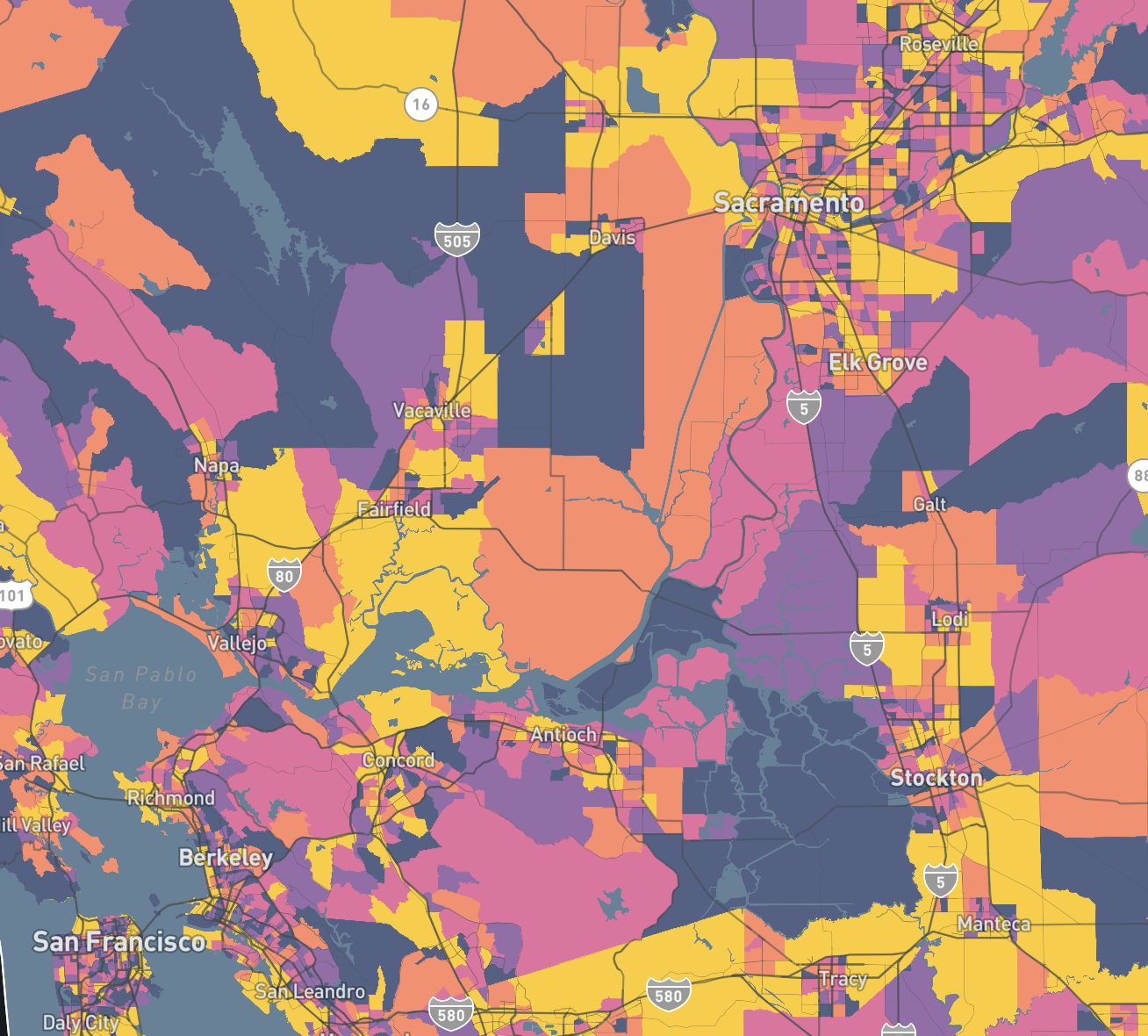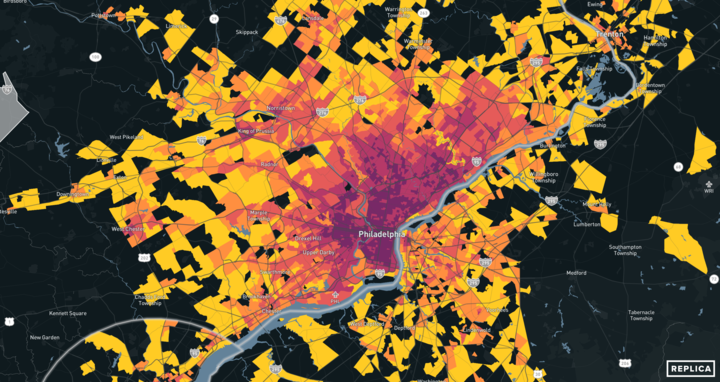It’s hard to think of an aspect of transportation or land use planning that isn’t deeply connected to vehicle miles traveled. The VMT by residents of a neighborhood impacts congestion and air quality; it reflects the accessibility of jobs and essential services, and overall affordability; it may point to areas of opportunity for transit-oriented development or active transportation infrastructure. For that reason alone, it’s an important part of so many of the analyses undertaken by public agencies across the country.
At Replica, we’ve invested in making it easier than ever before for customers to get nuanced data on VMT.
In this post, we’re highlighting four questions we think everyone should be asking when thinking about a VMT reduction strategy. We’re answering the questions for Los Angeles, but like all Replica datasets, the same data is available nationwide.
1. What’s the VMT per capita for residents of each census tract in LA? (establish a baseline).
Taking effective action requires first understanding existing conditions at granular level. In LA, VMT per capita, at 20 miles per day, is 10% lower than California’s average of 22 miles per day. But at the tract level, 962 tracts, or roughly 20% of all the tracts in LA county have VMT per capita greater than the statewide average. In the image below, all census tracts in yellow have daily VMT per capita averages higher than the California state average.
Demographic nuances begin to emerge, too. For households making less than $70,000 per year, VMT per capita drops to 18 miles per day, while for households making more than $70,000 per year, it skyrockets to 29 miles per day.

2. What’s the VMT distribution for lower-income residents? (identifying opportunities).
Identifying clusters of lower-income households with higher than average VMT can surface underlying inequalities in transportation systems and access. Higher VMT likely means more money spent on gas, worse connections to public transit, and less ability to access jobs or essential services via any mode other than a private automobile.
Areas where lower-income households have unusually high VMT per capita rates can be particularly good candidate locations for extending transit systems, adding active transportation infrastructure, or changing land use regulations to encourage more mixed-use development.
In the image below, per capita VMT for each census tract is filtered only for residents making less than $70,000 per year.

3. Where is VMT unusually high, even though transit is close? (identifying opportunities).
In the image below, we’ve highlighted only census tracts with higher than state average per capita VMT (22 mi/day) and populations greater than 1,500. By overlaying LA Metro bus routes in blue, we can identify areas where VMT remains high even with public transit connectivity.
This analysis quickly surfaces a limited set of priority areas for further analysis – suggesting places where it might be beneficial to add a stop or change the service schedule or where there aren’t enough walkable or bike-able amenities.

4. Where do residents rely on cars for very short, under one mile trips? (identifying opportunities).
Large numbers of very short trips clog up roadways, necessitate more parking, increase emissions, and can be devastating for pedestrian safety. This final image shows the places where residents take the most very short, less than one mile trips. These trips are priority candidates for mode substitution, particularly with an investment in biking and pedestrian infrastructure. (And with Replica, it’s even possible to map the individual roadways these sub-one mile trips utilize).

We think answering these four questions are essential to a strong VMT analysis, but they’re only the beginning. At Replica, we know further analysis on network-level VMT, VMT by trip purposes, and project-level VMT are all important next steps, and we are ready to support with data and tooling designed specifically for this purpose.








